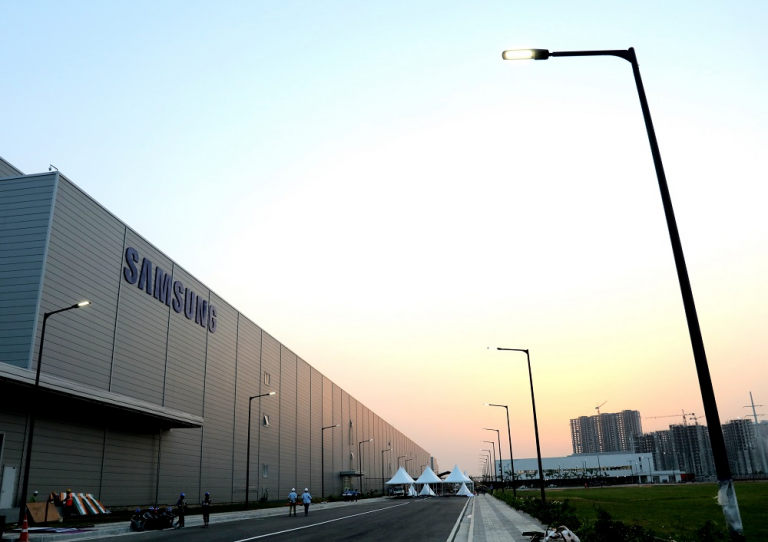
Samsung Electronics Co Ltd is seeking a way back to India market as anti-China sentiment continues to grow. A military conflict in June between China and India stirred anti-China sentiment that has affected its companies business presence in India.
As the anti-China sentiment escalates, non-Chinese companies are positioning to take advantage of the situation. Samsung is the only non-Chinese player in India and has seen an opportunity to penetrate the smartphone market where Chinese companies dominate.
Following the June conflict, India banned 59 apps of Chinese origin, particularly TikTok. The ban opened the way for indigenous apps and renewed the interest of American companies in doing business in the country.
Register for Tekedia Mini-MBA edition 19 (Feb 9 – May 2, 2026): big discounts for early bird.
Tekedia AI in Business Masterclass opens registrations.
Join Tekedia Capital Syndicate and co-invest in great global startups.
Register for Tekedia AI Lab: From Technical Design to Deployment (next edition begins Jan 24 2026).
The development seems to have stirred Samsung to fight for a leading position in India’s smartphone market even though it is dominated by companies from China that have won consumers with cheap prices.
Though Samsung still has a huge market in India, it has for long lost the smartphone market to China. Counterpoint, a tech researching firm said that India accounts for some 7.5% billion in annual retail smartphone revenue for Samsung, which makes it its second biggest market after the United States.
Reuters reported that Samsung recorded 26% market share in the second quarter to secure the No. 2 spot behind Xiaomi’s 29%, which leads the smartphone market in India. The report noted that the South Korean tech company’s diverse and inhouse supply chain helped it to beat product delays that affected other companies due to COVID-19 lockdowns.
It has been over three years since Samsung lost its dominance in India to Chinese companies. Its bounce back strategy seems to rest on its ability to source phones components internally.
Samsung has a mega mobile phone manufacturing plant in New Delhi, where it tests new devices and assembles them for export. With the manufacturing power, it has been able to curtail cost of production that took a toll on its rivals amidst the pandemic.
Reuters reported that in May, Samsung and Facebook partnered to train over 200,000 brick and mortar stores selling its phones to use social media for sales and marketing.
Xiaomi and Oppo, the leading Chinese brands in India were severely hit by the disruption of the global supply chain, following lockdowns induced by coronavirus. However, Samsung stayed in business through local production, online sales and delivery.
Samsung is building on this advantage, using its ability to manufacture internally, to fight for its place in the Indian market. It is hoping that making phones locally will cut the cost that has over the years, driven consumers to Chinese companies.
Since June, it has launched seven new smartphones, three of them cost $133,63 (less than 10,000 rupees), including its cheapest Android offering at $75, according to Reuters.
A source familiar with Samsung’s strategy in India said coronavirus has forced many online activities in the country, and therefore necessitated low budget phones.
“The COVID crisis has pushed people to use smartphones for everything from online education to digital payments to even connecting with friends on video calls. That’s why these budget phones are focused on the mass market,” the source said.
As part of its strategy, Samsung initiated installment-payment for its customers and incentive schemes designed to attract more consumers to its base, including offering students discounts on some devices.
But while Samsung appears to be gaining ground, there is still a mountain of challenge ahead of it. Although there is growing apathy toward Chinese companies, competition is still ripe. Xiaomi and Oppo still have a base of loyal customers who don’t care about what the Chinese and Indian governments are doing at the border. The companies have won them over through cheap phones and hope to use Prime Minister Narendra Modi ‘Made in India’ campaign to beat the anti-China sentiment.
On the other hand, the Google and Reliance’s Jio partnership could ruin Samsung’s prospects, as it will be offering the most affordable models of phones to Indians.
However, Samsung has a brand reputation that Indians trust, and would choose over Xiaomi and the others if the prices get close.
“Samsung is India’s No. 2 smartphone brand after Apple by image. So a phone priced between 6,000 rupees to 15,000 rupees from Samsung is very well placed today to capture market share from Chinese rivals,” said brand strategist Harish Bijoor.
Apple devices are out of the contest due to their costs, and the company is not considering lowering the price to woo customers. The cheapest iphone in India costs about 31,500 rupees, while the cheapest Xiaomi is around 7,500 rupees. So the competition is between Samsung and Chinese companies.



